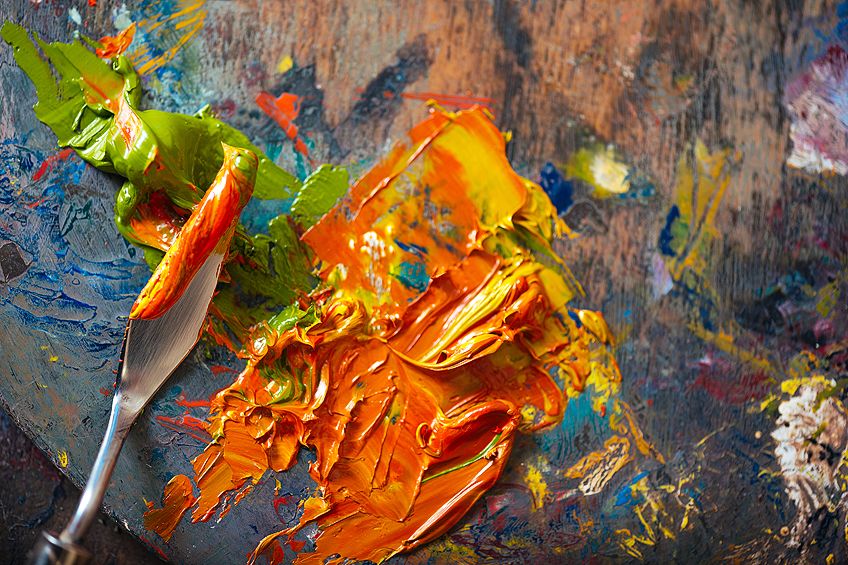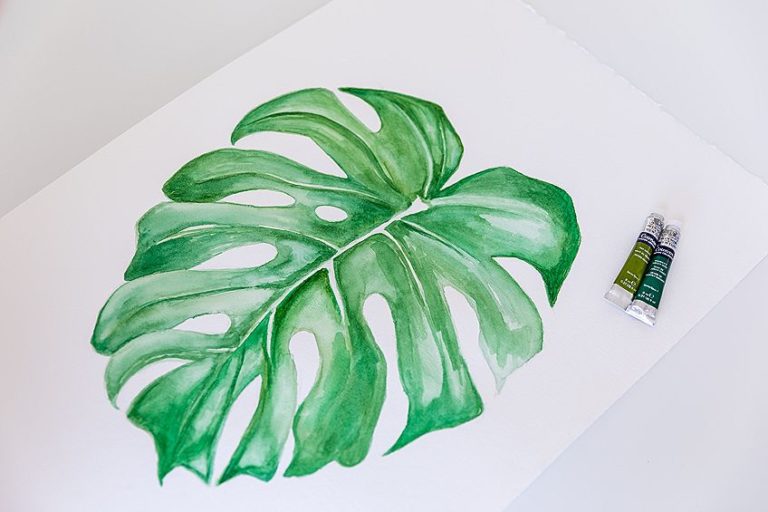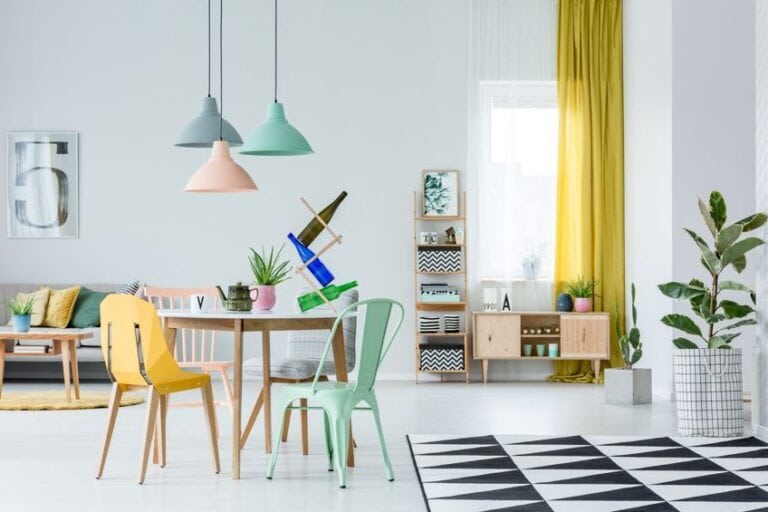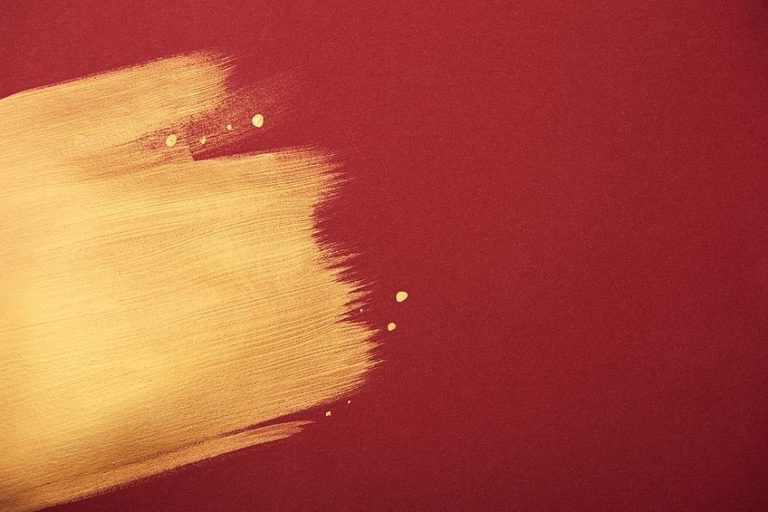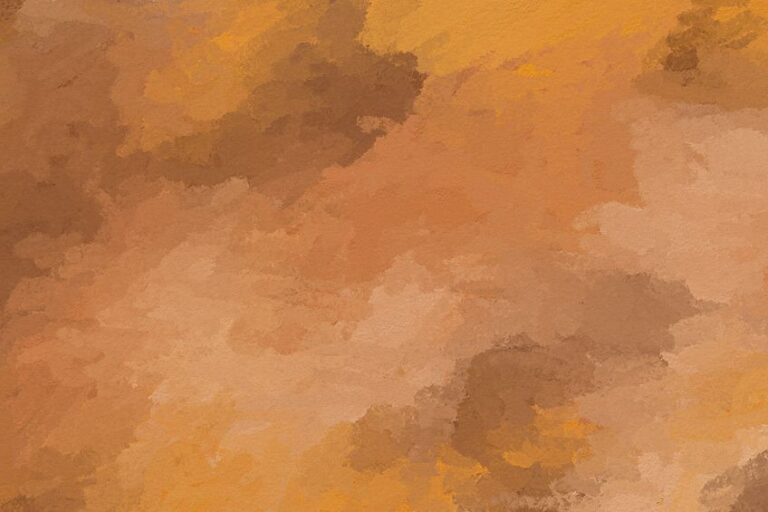What Colors Make Orange? – How to Mix Different Shades of Orange
This post may contain affiliate links. We may earn a commission from purchases made through them, at no additional cost to you.
When one thinks of orange, we usually associate it with the fruit. We think of warmth, sunshine, and summer. This color is not usually added to paint sets on purpose, as you can easily mix up various hues of this vibrant color using your primary shades. The purpose of this article is to provide you with a better understanding of how to make orange paint, as well as the different shades of orange one can create.
The Origin of Orange
Have you ever wondered whether oranges were named after the color or the other way around? Well, here is your answer. As it so happens, the first artists in Europe to use orange paint labeled it as yellow-red. This, of course, implied the colors used to mix it. Once merchants and sailors started arriving at ports from other countries, they brought with them fresh fruit and oranges. This is when they saw the connection, and this is where the name originates. Now you know what came first.
Color Meanings: Orange
Many people associate colors to have different meanings or to be associated with different feelings and emotions. Orange is certainly one of these! Being so bright and rich, orange stands out and catches the eye easily. This is why it is often used for prison uniforms, traffic cones, and traffic lights. Because of this, it is understandable how for many, orange means caution.
On the other hand, orange is also used in spirituality and various traditions around the world. This may bring up images of India for you, or even the Tibetan Monasteries and their Buddhist Monks in uniform. Within these cultures, orange is the color that represents our sacral chakra. This represents our life force and drives us as individuals. Orange also symbolises passion, happiness, and creativity. For these people, the color orange is a celebration of life!
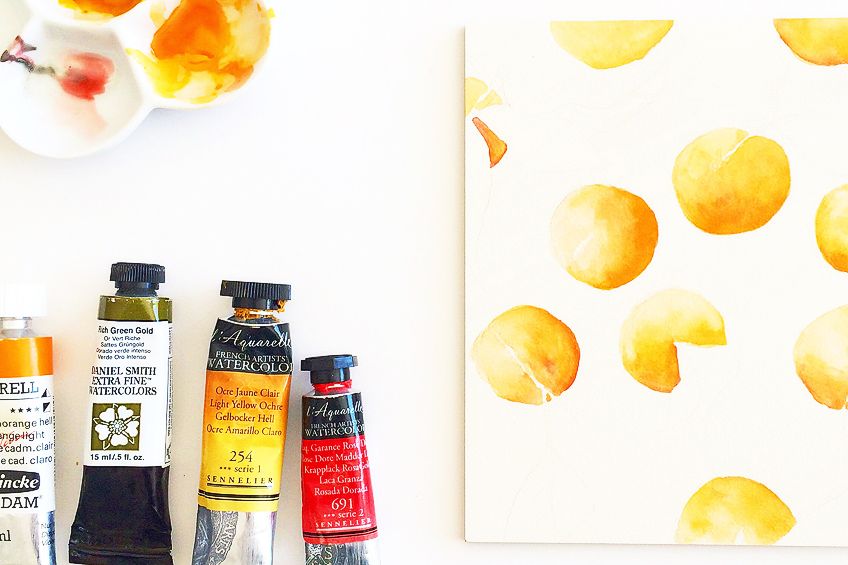
Shades of Orange in History
Aside from ancient people or religious aspects of this color, many famous artists in history favored the use of orange. This became more popular in the 1800s once the first synthetic paint became available in orange. Vincent van Gogh was one painter that enjoyed using this color in his work. His use of warm oranges against the cooler purples is a great example of how these colors create contrast.
Oranges are useful in different painting styles and subject matter. Using this tone against darker or cooler shades will assist in creating shadows and depth in your artwork. Using lighter oranges for toning lighter areas will also work well at building up colors and textures. Based on the other colors in your palette, the shades of orange you use can greatly affect your final piece.
Today, there are so many shades of orange that come ready mixed. But if you would like to mix your own, then there are some simple things to remember.
What Two Colors Make Orange?
As we discussed, it may seem like making orange is easy. However, the shade you create will be based on certain factors. Before mixing up your paints, you will need to decide whether you are looking for a pale orange or a vibrant one. Opting for a pale color means using two pale colors to create it. Adding white is another way to reach your desired lightness. Are you looking at how to make red-orange perhaps? Answering these questions will help us to choose the right primary colors and shades for the job.
Knowing Your Colors
When it comes to any sort of painting, using a color mixing wheel can be super helpful. This breaks up your color into sections, namely, primary, secondary, and tertiary colors. We all know the basics of any paint set or kit are the primary colors. Being red, blue, and yellow. These are used to create secondary colors and they cannot be recreated using other colors.
Tertiary colors are then a mixture of the secondary and primary. Mixing orange and yellow, for example, to create yellow-orange. Or adding more red to your orange paint to create red-orange. Understanding the rules around color bias will certainly make things easier when it comes to color mixing. This explains the warm and cool colors and how or why they work well when mixed.
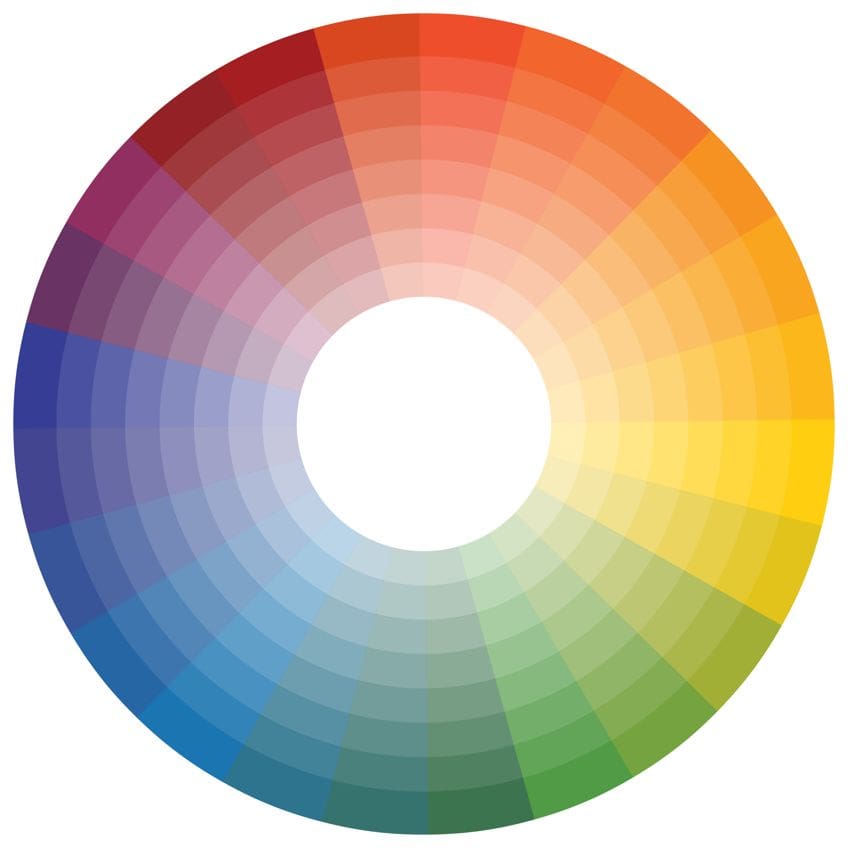
What Colors Make Orange: Color Bias
A color bias refers to the color temperature of your paint. This is based not only on the color of the paint but also on the underlying color pigments within it. A good example would be using pale-yellow paint. While this may seem like a warm color, some pale or lighter yellows contain small amounts of blue inside them. This is what offsets the pale hue on your surface.
Some reds are naturally a bit darker as they often contain blues or purples within them. Using these two examples to make shades of orange will produce dirtier shades, as they both contain hints of blue. Using two warm primary colors to make orange paint will produce a rich and vibrant color.
So, now you understand that one primary color can fall across two color categories if you are looking at the color bias. The best way to test your color bias is to test various shades of the same color on a piece of paper. See whether you notice the differences in the hues created and how they react when mixed with other colors. This gives you the chance to experiment and learn how to make dark orange versus light orange paints.
Shades of Yellow
Yellows come in different shades and hues too. The simplest way to distinguish these colors is by noticing which appears darker or richer in pigment. The shades of yellow that have hints of green in them are the ones that fall under the colder range. It may not always be easy to tell right away, but testing your paints before starting is always helpful for getting a better look. Below are some common shades of yellow along with their warm and cool ratings.
Cool Yellows
- Lemon yellow
- Cadmium yellow
Warm Yellows
- Mustard
- Ochre
- Saffron
- Golden
- Canary

Shades of Red
The shade of red you pick when making orange paint will also determine the fullness and body of your color. Reds can be vibrant and bold, or they can be dark and closer to browns and black. These are the shades that contain purple or blue undertones and are the cooler shades of red. Below are some common red hues divided into categories.
Warm Reds
- Scarlet
- Venetian
- Coquelicot
- Blood
- Cadmium
- Light Red
Cool Reds
- Crimson
- Magenta
- Carnelion
- Vermillion
How to Make Orange
Now that we know the basics, we can start looking at exactly what colors make orange to the desired effect we need it. If you are looking for a bright and rich orange that resembles the fruit, you could try using the cadmium paint colors of both red and yellow. These are both warm tones and will mix together to form a bold and beautiful orange.
If you are wanting to know how to make red-orange, you could simply add more red than yellow to your paint. The same would apply if you wanted your orange to have more yellow or to be a bit lighter. Adding extra yellow will achieve this easily.

How to Make Dark Orange
This method is known as color muting. For those curious about how to make dark orange, you would add some cooler colors into the mix, such as hints of blue or purple. This should not be so much as to change the vibrancy of your shades of orange, but enough that it darkens it slightly.
Muting your pigments is a wonderful way to enhance areas or to add depth and shadows. Creating and applying various shades of orange to your work will allow for more range and versatility. Someone would rarely use only orange in one shade for an art piece, as that could be too much and too loud for some. Knowing how to make dark orange and mute your colors will allow you more versatility and room for other bold colors.
Using Complementary Colors for Muting
The key to muting your colors is using complementary colors over each other. This is where your color mixing wheels come in handy. Complementary colors are natural opposites of each other. Therefore, they will not mix into or blend into the other color. This is the reason as to why blue works so well with our oranges, and it also means that using certain shades of green could work well too.
If you are looking at using shades of blue to mute your oranges, then keep in mind your color biases. This will still apply when color muting. Adding a cool blue such as turquoise will alter the temperature of your orange. Lighter and cooler colors will cause the vibrancy of your orange to be reduced, and they may look flat. If you would like to mute the color but prefer a richer outcome, then try using a warmer blue such as cobalt.
Using green to mute these colors will provide you with a totally unique texture. The risk when using greens, though, is that they may turn brown or muddy when mixed with your orange. This would be the case when using darker greens. Opting for lighter or warmer choices of green will maintain the richness of your oranges.
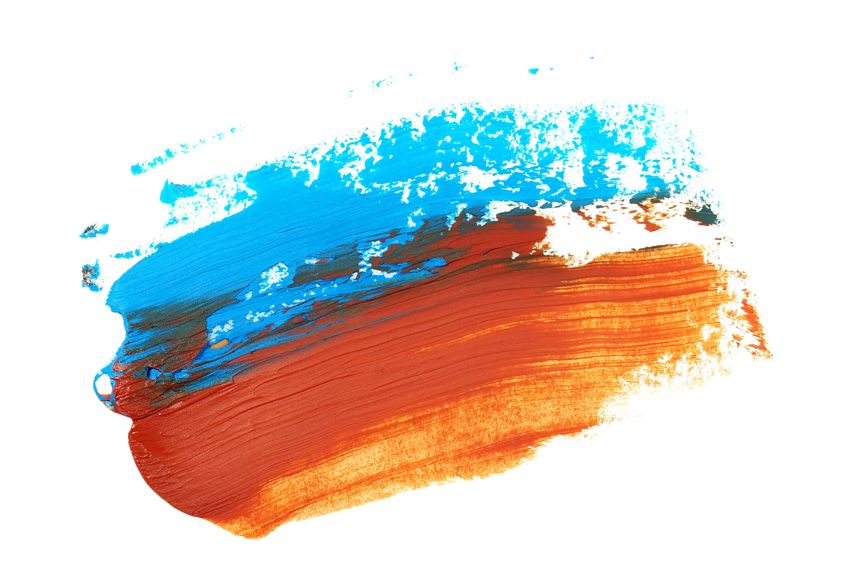
Muting and Darkening
Aside from muting, you can go the easy route and simply add some black to your colors to darken them. This can be risky though, as adding too much could cause you to lose your original color. Black is a very dominant shade and it will consume and take over other lighter pigments. Start with very small amounts when using this method. Test your paint once you have mixed it to see if you are satisfied before adding more.
Another dark color you could try that may not be as risky is red. Using more red in your orange mixes will naturally darken them and provide you with a more full-bodied result. You will only know the best technique for you once you have had some time to experiment and play with your colors.
Tints and Shades of Orange
Using tints and shades simply means adding lighter or darker colors to your original shade. Adding various shades and hue consistencies allows for better contracts and visibility of the elements in your art. Adding white or lighter shades of a certain color will enhance different aspects and make your work stand out.
A great example is painting a jack-o-lantern for Halloween. If you were to paint the entire thing in one shade of orange, you would not be able to distinguish between each element. Such as the light inside or the ridges on the pumpkin. Using lighter shades for areas touched by light will give a warm glow and realistic effect, while using muted tints or darker shades to create shadows on the ridges will create more depth.
How to Make Light Orange
As we learned above, white is the best for lightening shades and creating tints. Adding varying amounts of white to different shades of orange will give you an idea of how much is needed to create the desired effect. White will also make your color flatter, appearing more matte if you add too much. Using light or pale yellows can also work well for lightening or tinting your orange shades. This way, you are not sacrificing the vibrancy of your hue, and the yellow will maintain the original vibrancy of your color.
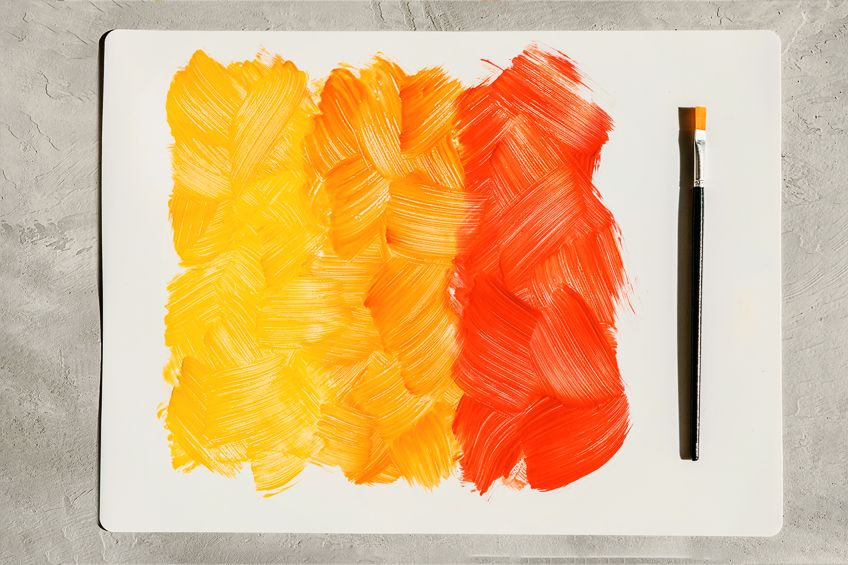
Creating Different Shades of Orange
Below, we have added a scientific chart for color mixing that you may find useful. This explains the chemical formulations of each shade and what their temperatures are. While it is not necessary to learn this in order to mix your own paint, it just may come in handy.
| Type of Orange | Orange Shade | Hex Number | % Red, Yellow, Blue, Green |
| True Orange | #FC6600 | 252% Red, 102% Green, 0% Blue | |
| Bronze | #B1560F | 177% Yellow, 86% Red, 15% Blue, a tiny bit of black | |
| Rust | #b7410e | 183% Red and Yellow, 14% Blue, a tiny bit of black | |
| Apricot | #EF820D | 239% Yellow, 130% Red, 13% Blue | |
| Goldenrod | #DBA520 | 219% Yellow, 165% Red, 32% Blue | |
| Honey | #EB9605 | 235% Yellow, 150% Red, 5% Blue | |
| Firebrick | #B22222 | 178% Red and Yellow, 34% Blue | |
| Salmon | #FA8072 | 250% Red, 128% Yellow |
Conclusion
Experimenting with different colors is key for any aspiring artist. Knowing how to make orange paint is certainly a step in the right direction. This color in its many forms and shades can be useful in creating beautiful works of art that are eye-catching and bold.
Remember that when combining colors, muting or lightening them to the color temperatures you are using will make a difference. When wanting to make darker colors, try using cooler or darker shades. When wanting to add tints or lighten your colors, try using white or pale colors that are warmer.
Try to have fun playing with your paints and mixing options. You can always make your own paint color swatches with ratios and instructions on colors you have mixed and enjoyed. This way, you have a record for future artwork and you will know exactly how to get that same color you loved and used before.
Frequently Asked Questions
What Is the Complementary Color to Orange?
As shown on any color mixing wheel, the direct opposite of orange is blue. This is because each cool and warm color have their own opposites. Based on the shade of your orange, its complementary color could be a lighter blue or a darker one. Knowing your complementary colors can be useful for adding different textures or muting and darkening your colors. Using blue or green as a complementary color to orange will work well depending on the shade of orange being used.
How to Make Red-Orange?
Because orange is made using a combination of yellow and red, simply adding red will give it more of a red-orange appearance. Adding too much will darken the orange. The trick here is balance; if you found you have added too much red, try adding more yellow and starting at the bottom again. This should allow you to build your color back to where it was before you added the red.
How Can You Make Orange Lighter?
Making colors lighter is relatively simple. You can lighten any color by adding a small amount of white paint. The only issue here is that you may find your previously robust orange looking faded and flat if you add too much. In the case of trying to lighten orange, adding a bit more yellow will work well without reducing the vibrancy of the color itself.
How Can You Darken Orange?
As with any other paint color, you can make orange darker by adding in some black. Adding in darker colors such as black or dark complementary colors will make your orange muted and darker. To achieve browns or darker oranges, you can also add in darker greens. As green is technically the opposite of orange, this should give you the desired effect. Although using dark blues will also work well.
What Two Colors Make Orange?
While this seems like a simple question, the answer is dependent on a few factors. We all know that red and yellow make orange, but what type of red and yellow you use will determine the type of orange. Using warm primary colors will produce a rich and warm orange. Using cooler colors to make your shade will result in a colder or flatter version of this color.
Larissa Meyer is a 32-year-old mother from Michigan and creative spirit since childhood. Her passion for painting and drawing has led her to an education as an illustrator and a career as a freelance graphic designer. She has a Bachelor of Fine Arts in Illustration and a degree in Graphic Design. Larissa is a talented artist who is able to master a wide range of styles and techniques to bring her artistic vision to life. Her greatest passion is currently fluid painting and epoxy resin art. As a mom of two kids, Larissa also understands the importance of fostering creativity in early childhood. She uses her experience and knowledge to help other parents inspire their children and develop their artistic skills as well.
Learn all about Larissa Meyer and Fluid Painting.

